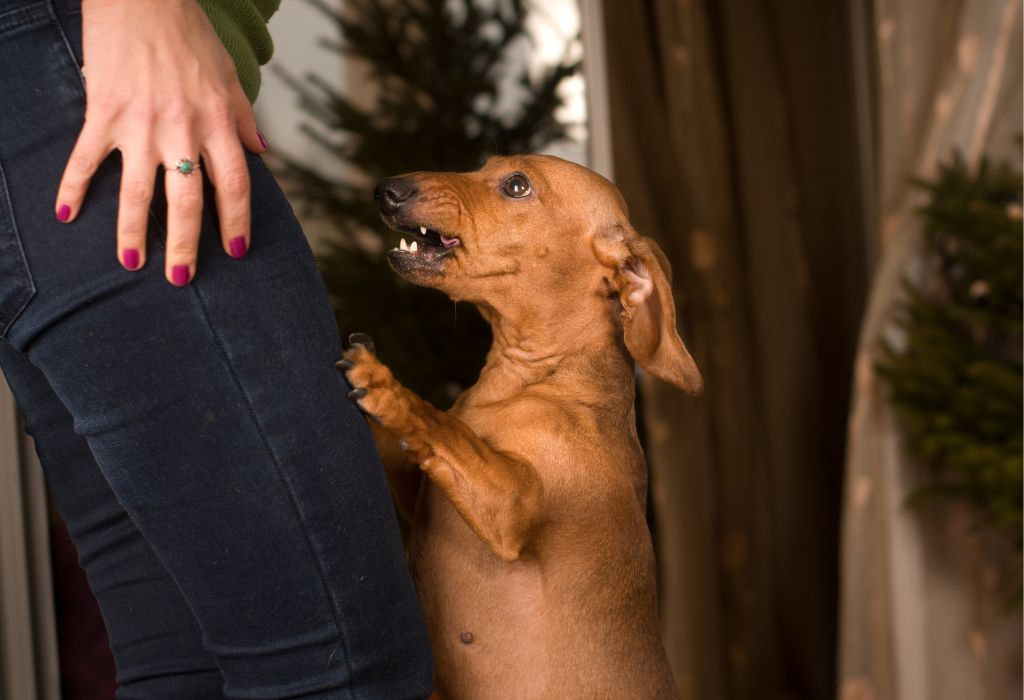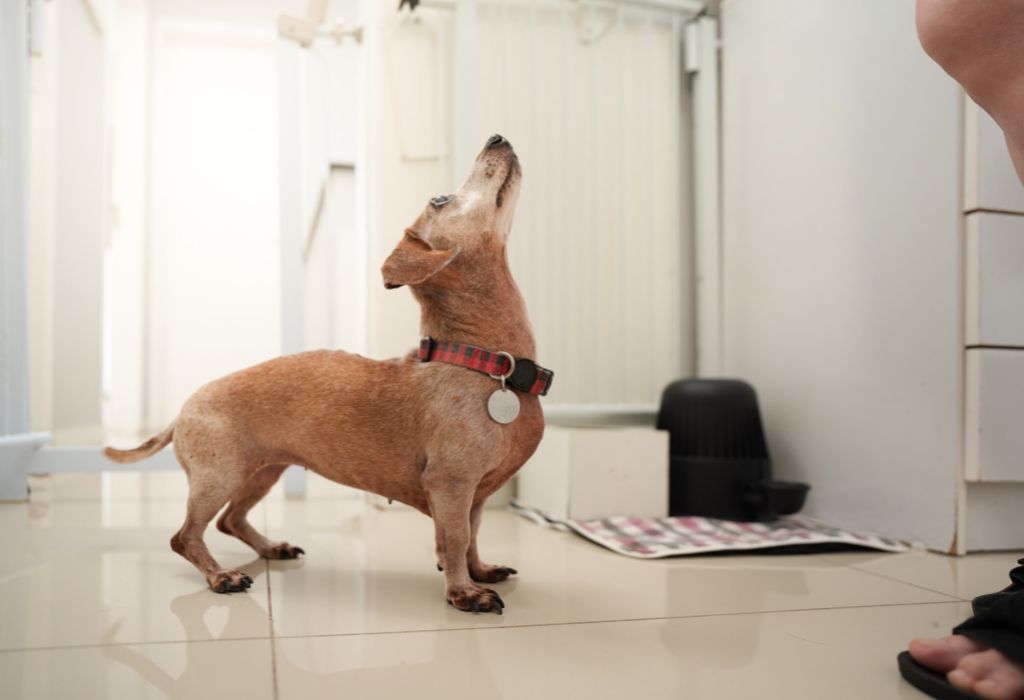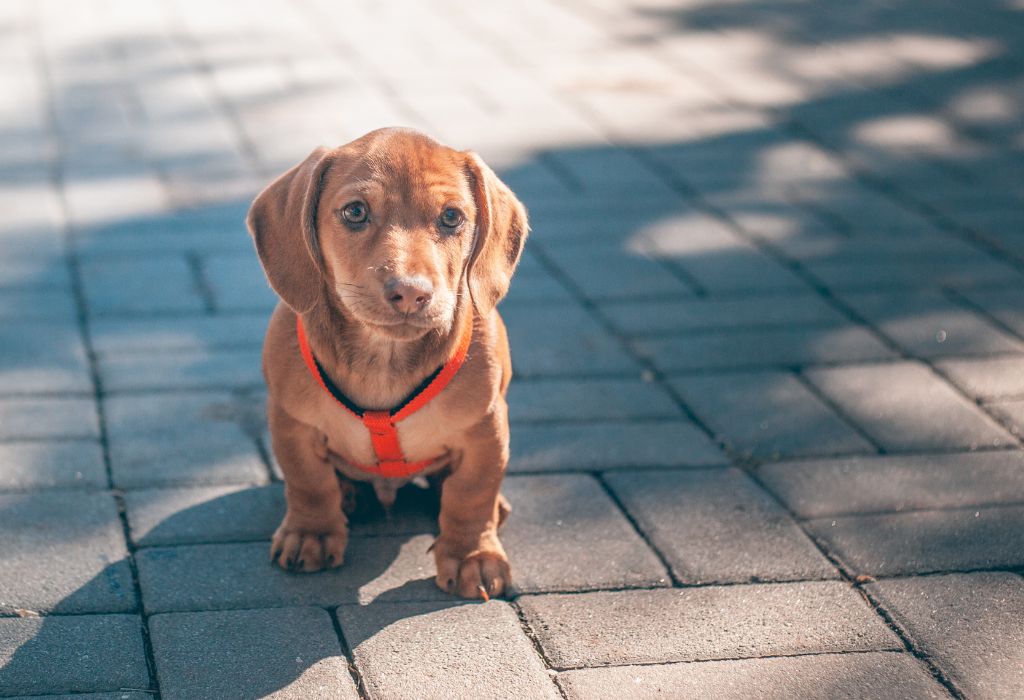You’re about to leave a house and leave your pup alone for a bit. You are getting ready and notice him pacing, barking, or having other signs of anxiety. You know that after you leave the house your dog will stay there stressed and anxious but you have no idea what to do.
You’re not alone. Many owners face this problem because Dachshunds are prone to separation anxiety.
While this behaviour can be distressing for owners and their pets alike, understanding and treating dachshund separation anxiety doesn’t have to be a daunting task. With the right knowledge and support, you can help your pup manage their anxious behaviour so that everyone in the household is happy.
In this article, we will discuss:
- what dachshund separation anxiety is;
- its signs and symptoms;
- ways to understand your dog’s emotions;
- tips for diagnosing it;
- strategies for dealing with it;
- how to prepare yourself (and your pup) for departure.
What is Dachshund Separation Anxiety?
Do you worry that your pup gets lonely when you’re away? Don’t worry, with a bit of patience and dedication, you can help your doxie stay calm and content when they’re alone.
Dachshund separation anxiety is the fear of being left alone for too long and can be expressed in various ways such as destructive behaviour, barking, howling, and other signs of distress. To understand what causes this type of anxiety in dogs, it’s important to recognize their pack mentality.
Dachshunds are social animals by nature, so it’s essential to provide them with proper socializing strategies that will reduce or prevent this type of anxiety from happening. Counter conditioning techniques like providing treats or toys before leaving them alone can also help create a positive association with being alone.
Additionally, prevention methods such as regular exercise, mental stimulation activities, and avoiding long periods of solitude are important for managing dachshund separation anxiety. With the right approach and consistent training sessions, you can manage your pup’s fear of being left alone and make sure they feel safe even when no one is home to keep them company.
Signs and Symptoms of Dachshund Separation Anxiety
If your pup is exhibiting destructive behaviour, excessive barking, or any other signs of distress when you’re away from home, they may be suffering from separation anxiety – and it’s important to take action quickly.
Separation anxiety can manifest in different ways and often appears as a result of puppyhood trauma or lack of environmental enrichment. Signs commonly associated with this disorder include constant howling and barking, pacing around the house and whining, panting, defecating or urinating inside the house (even coprophagia!), digging, chewing and other destructive behaviour.
Positive reinforcement training can help reduce anxiety in these situations by teaching your pup that being alone isn’t so bad after all. You can also provide your pup with plenty of environmental enrichment to keep them occupied while you’re gone – like food puzzles or interactive toys stuffed with treats!
Just make sure that whatever you do for your pup is done through positive reinforcement; remember to reward them with plenty of praise and treats for good behaviour!
Understanding Your Dachshund’s Separation Anxiety
Understanding your dachshund’s separation anxiety can be difficult, but it’s important to recognize the potential causes of this behaviour.
There’s no definitive answer as to why dachshunds get separation anxiety. However, they can become anxious due to changes in their daily routine or life changes, such as moving to a new home or the absence of a close family member.
Abandoned and rescued dogs may also be more prone to experiencing separation anxiety.
Causes of Separation Anxiety in Dachshunds
With their intense attachment to us and lack of socialisation, it’s no wonder dachshunds are so prone to separation anxiety – it practically rips ’em apart!
Separation anxiety in dachshunds can be caused by a variety of factors: over attachment to the owner, lack of socialisation, changes in routine or environment, and even traumatic events.
To prevent the emergence of separation anxiety in Dachshunds, owners should ensure they provide plenty of environmental enrichment as well as exercise needs. This can help with modifying behaviour and creating positive associations when left alone.
Additionally, proper socialisation from a young age is essential for preventing separation anxiety from developing later on in life.
Diagnosing Separation Anxiety in Your Dachshund
Diagnosing your pup’s separation anxiety is key to helping them feel secure when you’re away. One of the most important steps in addressing separation anxiety is to understand what triggers it.
A few common causes of this condition include being left alone for long periods, changes in routine, lack of socialization, and not enough positive reinforcement or training techniques.
To diagnose the condition, look out for signs like excessive barking or whining when left alone, urinating or defecating indoors while you’re gone, destruction of objects inside the house, and extreme clinginess when with you.
If you can identify these symptoms in your pup then it’s best to visit a veterinarian as soon as possible who will be able to recommend treatment options including behavioural modification therapies and medications that could help reduce their anxiety levels.
Dealing with Dachshund Separation Anxiety
If your dachshund is suffering from separation anxiety, there are several things you can do to help.
Firstly, create a safe space for your pup by making sure their crate or bed is comfortable and secure.
Secondly, gradually desensitize them to being away from you through activities such as leaving the house for short periods of time, getting them used to being with other people, and providing plenty of toys and mental stimulation while you’re gone.
Finally, medications and supplements can be helpful in calming an anxious dog; however, they should only be used after consulting with a vet or behaviourist first.
Creating a Safe Space for Your Dachshund
Crafting a cozy safe space for your pup is key to helping them feel comfortable and secure when you’re away. To make sure that your dachshund’s safe haven is the best it can be, there are several things to consider.
First, positive reinforcement should be used when introducing the area; this will help create an association of comfort and security with the space. Crate training, if desired, should also be done gradually in order to help your pup be comfortable with their new den-like area.
Exercise schedules should also take into account environmental enrichment activities within the safe zone – such as puzzles, toys or long lasting chews – so that they always have something to do while in their special spot.
Finally, make sure that the area is easily accessible at all times and not used as a form of punishment which could further aggravate separation anxiety issues in a dachshund. By taking these steps, you can rest assured knowing that your furry friend has a secure place where they can relax and unwind whenever needed!
Gradual Desensitization to Separation
Once you’ve established a safe space for your pup, it’s time to start gradually desensitizing them to being left alone. Systematic desensitization is an effective preventative strategy that uses behavioural modification and positive reinforcement techniques. This means breaking down the process of leaving into small steps, starting with the most manageable step and then slowly increasing the length of time away.
During this process, it’s important to keep your dachshund feeling safe so as not to overwhelm them or cause further anxiety. For example, if your pup starts showing signs of distress when you reach for the door handle, start by simply walking towards the door without touching it and then returning back to them.
After they have adapted to this step, increase it slightly by reaching for the handle but not actually opening the door. Once they become comfortable with that step, progress further by opening and closing the door without actually exiting through it. By gradually building up these steps over several days or weeks, you can help your dachshund overcome their separation anxiety in a controlled manner while positively reinforcing each new level they are able to manage without distress.
Medications and Supplements
Now that you understand the importance of gradual desensitization to separation for dachshunds, it’s time to look at other techniques that can be used to help your pup.
Medications and supplements can be a great way to reduce anxiety in Dachshunds, but there are a few things you should know before trying them out:
- Talk to your vet about any possible side effects from medications or supplements.
- Research the efficacy of various supplements for treating separation anxiety in Dachshunds specifically.
- Look into positive reinforcement techniques and how they may impact your pup’s behaviour around separation anxiety.
- Use medications and/or supplements in addition to, not as a replacement for, gradual desensitization training.
When used correctly, medications and supplements can provide an effective tool for reducing separation anxiety in Dachshunds while helping them learn new behaviours more quickly and efficiently than traditional methods alone.
With the right combination of medication and lifestyle changes, you can help your furry companion lead a happier life free from fear and stress caused by separation anxiety!
Preparing for Your Departure
To help your pup stay calm when you leave, start with short departures and gradually build up to longer ones. This will increase their familiarity with the idea of you leaving and give them time to adjust.
Positive reinforcement behaviour training can also be used during each departure, such as using a cue for them to “Go to your crate” or “Go to your place” with a treat or toy as a reward.
You may also want to make environmental changes that make being alone more comfortable for them, such as providing an interactive toy or safe bone.
Setting up a reliable routine and providing enough exercise during the day will also go a long way towards helping reduce their anxiety while they are on their own.
Conclusion
You’ve learned a lot about dachshunds and their separation anxiety. With your new understanding, you can now better recognize signs of distress in your pup and know how to best help them.
Remember that it’s normal for this breed to have some level of separation anxiety, so don’t be too hard on yourself if your pup is showing signs.
Interesting fact: Studies show that as many as 35% of all dogs may suffer from some form of separation anxiety, making it one of the most common behavioural problems among pets today.
It’s important to keep this statistic in mind when caring for your dachshund. Separation Anxiety is common and with patience, understanding, and proper training you can help ensure that your pup gets the love and care they need!











0 Comments